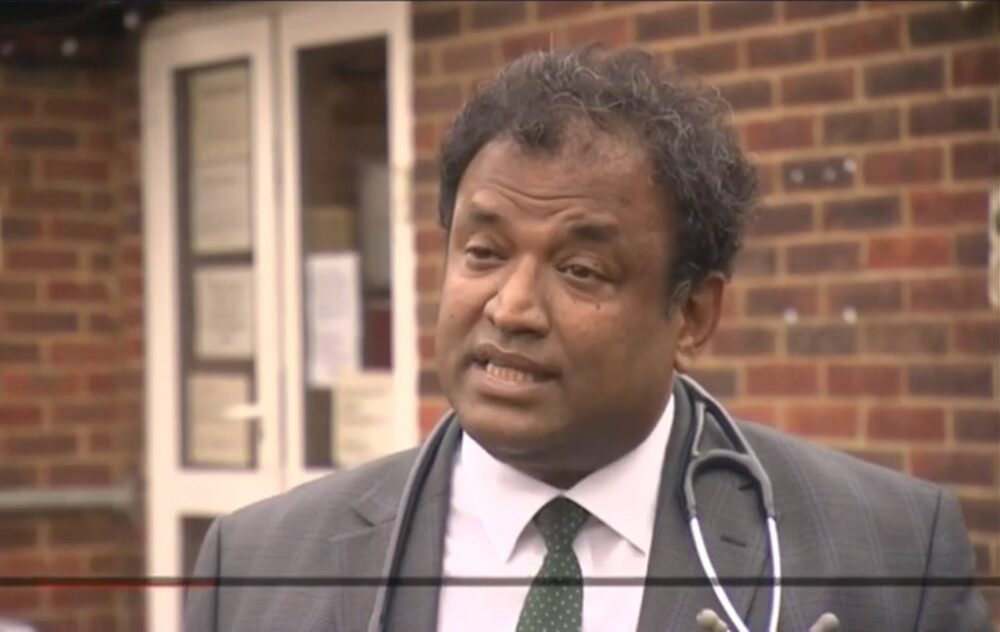Doctor says High Court ruling has major implications for other GPs, as his patients call for MPs to investigate
- NHS England urged by patients to reinstate ‘unlawfully dismissed’ GP
- MPs urged to raise issue in parliament
- BMA applying to intervene as ‘interested party’ in GP’s legal appeal
An award-winning GP and his patients have today urged NHS England to urgently reinstate him in a long-running saga over patient data which has placed two popular practices under a cloud.
Local patients’ groups are due to meet Labour MP John McDonnell today (Nov 14th) to request that the issues are raised urgently in parliament. They are also seeking an urgent meeting with constituency MP – former prime minister Boris Johnson.
A High Court judge stated last month that Dr Sashi Shashikanth’s contracts were unlawfully terminated – for a GP, the equivalent of being sacked – in a complex dispute which now raises major concerns for other GPs across England.
The popular GP, who operates two practices with more than 8,000 patients in West London, is now seeking permission to appeal the court judgment, because despite being unlawfully dismissed, the judge also ruled the case was not applicable for Judicial Review.
The court ruling raises major concerns for other GPs who seek to dispute decisions made by NHS England in future.
The long and bitter saga was sparked by Dr Shashikanth’s refusal, supported by legal advice and the wishes of his patients, to give full access to confidential patients’ data to the local Primary Care Network (PCN), part of a larger private enterprise. The GP’s practices were the only local surgeries which chose not to join the PCN but offered to deliver services themselves.
As a result, his contracts were terminated by Hillingdon’s now defunct Clinical Commissioning Group (CCG) which also lodged a series of unfounded complaints about the GP to a range of key bodies including the General Medical Council (GMC), NHS England’s GP performance management department, and the Care Quality Commission (CQC), each of which rejected the complaints. Both Dr Shashikanth’s teaching and training practices have ‘Good’ CQC ratings.
Dr Shashikanth said: “This whole saga is totally unnecessary. At a time when GP workload is on the increase, our time, energy and resources are being diverted into fighting an unnecessary legal battle and unfounded complaints, where we should be concentrating on delivering services to our patients.
“I’m seeking to have my termination notices urgently rescinded by NHS England. I have also taken legal advice and I’m seeking permission to appeal the judge’s decision not to allow a Judicial Review. It’s time for this affair to be resolved, quickly, particularly because we’ve been treated differently to other similar practices in England.”
Dr Kieran Sharrock, deputy chair of the BMA GP Committee England said: “When a court has found a judgment to be incorrect there has to be a legal route to challenge the judgment. If procedural process gets in the way of justice, the BMA believes this has to be corrected.”
The doctor has also sought the help of Rob Hurd, CEO of NWL ICS, the body which inherited the mess when it replaced all of West London’s CCGs. Mr Hurd has been asked to help resolve the saga quickly, so that attention can be focused locally on looking after patients, especially at a time of severe GP shortages.
John Rogers, 78, a prostate cancer patient, who leads one of the local patient groups, said: “Dr Shashikanth has been treated terribly at a time when the NHS is crying out for good doctors.
“Patients at both his surgeries decided they did not want confidential records shared, and our GP and his practices are being discriminated against as a result.
“It’s ludicrous – and a scandalous waste of Dr Shashikanth’s money and taxpayers’ money fighting this in court. NHS England should do the right thing and reinstate our doctor now especially since the judge said he’d been treated unlawfully.”
Heart transplant patient, Dennis Ball, 77, has been treated by Dr Shashikanth for nearly 20 years. He said: “I think he has been treated harshly, unfairly, and has been punished because his patients decided they did not want their data shared. I think there’s discrimination and politics at the heart of this whole sorry affair.
“Dr Shashikanth must be given his full status back and should be able to practise how he and his patients wish.”
